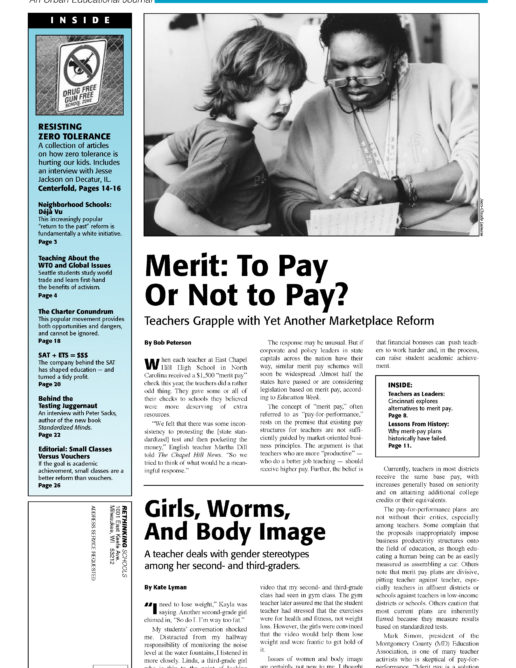Preview of Article:
Resisting Zero Tolerance
By William Ayers and Bernadine Dohrn
Not long ago, the principal in our children’s high school announced a new policy – zero tolerance. From now on, she said, there would be no excuse for violating certain school rules, notably the ban on student use of drugs and alcohol. At first, the announcement seemed harmless, if a little odd – after all, there had never been any murkiness or ambiguity about the standard of behavior: Kids shouldn’t drink or do drugs. What could a zero tolerance policy possibly add? Further, drug and alcohol abuse suddenly had a new and privileged position in the hierarchy of misbehavior- fighting wasn’t on the list yet, nor were racial bigotry, disrespect, sexual assault, and a whole lot more.
Shortly after the new policy was implemented, we asked the principal about it. She explained that zero tolerance was simply an attempt to re-focus on existing rules, something to get the kids’ attention. “We want to clarify what we already do,” she explained.
Zero tolerance policies have by now become common place in ourschools. What began, perhaps, as clarification has morphed rapidly into Frankenstein’s monster, destroying children in its path.
Some 90 children are now suspended or expelled from the Chicago Public Schools each week. The vast majority are excluded from their schools for non-violent misdeeds. Schools everywhere – public, private, urban, suburban, rural, and parochial – are turning into fortresses where electronic searches, locked doors, armed police, surveillance cameras, patrolled cafeterias, and weighty rule books define the landscape.</p

